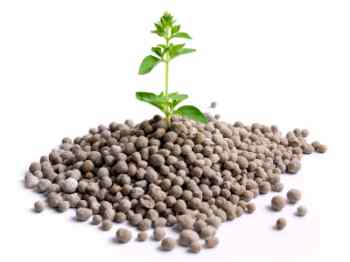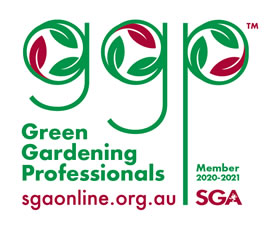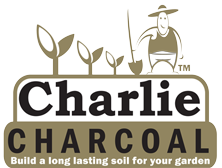| item(s), Total: $0.00 View Cart |
| Shopping cart is empty. |
Fertilisers - why we use them

If you're a Perth organic gardener, no doubt you're wondering how to improve Perth's sandy soils and have a waterwise garden.
As gardeners, we love to nurture and fuss over our plants to encourage them to flower, fruit, and grow quickly. We often enjoy meddling and “helping” nature along – whether or not it may really be necessary.
One of the ways we all like to “help” is to fertilise plants. Fertilisers are a way of feeding up plants, providing nutrients which the plant needs to function.
There are many forms of fertilisers available, and each provides nutrients in a different ratio. There is a very complex science involving chemistry, plant nutrients and nutrient imbalances – and there are many excellent books and articles on this topic. In this fact sheet we are aiming to provide general information only – please do further research if this is an area of special interest to you.
There are organic and inorganic fertilisers; ie. Those that are naturally sourced, and those that are manufactured combinations of elements. To a plant, the elements that are supplied by either form are identical. There is no difference. Well - Kind of.
The main difference is that organic fertilisers contain organic matter – they are made from the remains of plants (eg. Compost) or animals (eg. Manure, blood & bone), or rock minerals, and help to improve the soil structure over time. This improved soil structure makes the growing environment more habitable for beneficial microbes, worms, and the plants themselves, and generally promotes plants more resistant to pest and disease attack.
Inorganic fertilisers are manufactured from combining elements. They are usually highly soluble and therefore available more quickly to plants. Inorganic fertilisers will tend to leach more quickly, especially into Perth sandy soil which can’t hold onto water. What plants can’t use will tend to be washed away and be unobtainable to the roots. Usually they are stronger (e. contain much higher concentrations of nutrients), and are used at much lower rates than organic fertilisers need to be. Always read the label and NEVER use more soluble fertiliser than the recommended rate – adding too much inorganic fertiliser can cause salinity problems, and damage soil biota.
Why choose organic fertiliser? Imagine yourself not eating fruit or vegetables, but just taking in all your vitamins from tablets everyday. Sure, your body is receiving nutrients, but what about all the other beneficial things contained in fruit and vegetables? Enzymes, fibre, phytonutrients, etc. That’s part of the difference between using organic and inorganic fertilisers for your plants.
Both organic and inorganic fertilisers can be overused. And this is where we need to use common sense and observation to make a judgement on when we need to apply fertilisers to help – and not hinder our plants. We need to be in touch with our gardens and observe their growth regularly to make that judgement call. If plants are growing well, then there is possibly no need to provide additional food. Excess fertiliser can leach through to our precious creeks and waterways - causing poisonous algal blooms and killing marine life. Improving sandy soil and working on the structure by adding clay and biochar is hugely beneficial - and a long term benefit.
Mild deficiencies show up by slow or retarded growth. But if you suspect this is the case – look around your garden. Do you have other plants close by that are doing really well? Does this area of your garden receive less sun? Less water? Was this a weaker seedling to begin with? Is there insect or fungal attack? Many factors come into play.
Of course, there are signs - usually in the leaf growth – which can give you clues. A good book or even magazine article with photos is a useful tool to compare your sick plants to. Usually you can make some deductions and work out some possible solutions to try.
Detective work is required – which is again why knowing your garden is helpful. Your background knowledge and history of the gardening practises used is very important. Unless you wish to send samples off for laboratory testing (which is not cheap) it can be very difficult to accurately work out what your soil is lacking. Sometimes even things like seasonal variations (moisture, temperature – etc.) will give different results from your samples, not to mention variable growth from your plants.
Did you know that TOO MUCH fertiliser can often cause similar symptoms to nutrient deficiencies?
There is a very delicate balance of how the elements in fertilisers react with each other. Sometimes deficiencies are also linked to pH levels of the soil. (See our fact sheet on pH for more details.)
Different plants also take nutrients at different levels – and even the same plant has different nutrient requirements during different stages of it’s growth.
And sometimes when we start to meddle – adding bits of this and that – things can get out of balance and like a see-saw, take time and effort to reach a settled equilibrium. But don’t despair. Unless you have an absolute life-or-death rescue of a valuable specimen to perform, then the ‘slow and gentle’ approach is usually best.
Generally, ornamental trees and shrubs, and many native species that are established and growing well don’t need additional fertiliser – particularly if their leaf litter is left as mulch, because nutrients are recycled naturally.
Flowering shrubs, or those pruned heavily (eg. Roses) will benefit by annual applications of fertiliser to replace nutrients used up.
Fruit trees – especially young ones – do need feeding, and it is a good idea to split this into two applications a year. A smaller amount in autumn, and a higher amount in spring, when the plant is putting on new growth and preparing for flowering. Use a balanced fertiliser with potassium to help encourage fruiting.
Vegetables and herb gardens are the most intensive gardens we have, and – depending on crops grown – will need higher amounts of feeding.
Root crops often do not require additional feeding after planting – just ensure they are planted into improved, fertile soil. (Carrots being an exception – they tend to like quite poor, sandy soil.)
Peas and beans, due to their ability to fix nitrogen from the atmosphere, will also often do well without additional fertiliser during their growth season.
Fruiting vegetables will benefit from fertiliser, and the most hungry of all are the leafy greens, which will need feeding regularly, particularly if you are harvesting frequently and pushing the plant to be highly productive. Often a light liquid feed is beneficial to fruiting and leafy crops on a weekly or fortnightly basis through the height of their productive period.
The main point to stress is that if you have improved your soil BEFORE planting with lots of compost, organic materials and a touch of rock minerals – your plants have all they need to get off to a flying start and often won’t need much else. Additional fertilisers can be a waste of money and may in fact be doing more harm than good.
Want to know when to plant vegetables in Perth? Sign up for instant access to our FREE downloadable gardening guides.
Get Growing Today!
Come on in!
Pick up bags or bulk product bring your trailer (or use one of ours) Opening hours: 8.30 - 4.00 Monday - Saturday (closed Sunday)
Shop Online - We Deliver
24/7 convenient & secure online shopping or support your local independent retail outlet
Get Growing
We guarantee our products. Ask our friendly staff for help & advice ~ we're here to help you achieve the garden of your dreams.
























